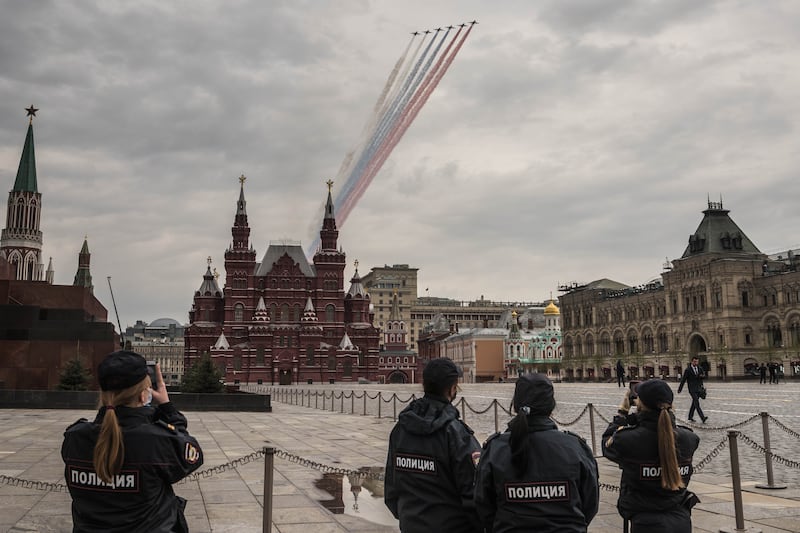Leak or hack? Information or disinformation? A coup for Russia or a ploy by the United States?
Days after US intelligence documents, some marked “top secret,” were found circulating on social media, questions remain about how dozens of pages from Pentagon briefings became public and how much stock to put in them.
Here is what we know about the documents.
Are the documents real?
Yes, officials say – at least, for the most part. US officials are alarmed at the exposure of secret information, and the FBI is working to determine the source of the leak.
RM Block
Some of the documents appear to have been altered, officials say. It is unclear who doctored the reports or why they did so. Whatever the reason, some of the material, military analysts, say, overstates US estimates of Ukrainian war dead and understates how many Russian troops have been killed since Moscow’s invasion of its neighbour last year.
Where did the materials come from?
The evidence that this is a leak, and not a hack, appears strong.
The material may be popping up Whack-a-Mole style on platforms such as Twitter, 4chan and the Telegram messaging app – to say nothing of a Discord channel dedicated to the video game Minecraft – but what is being circulated are photographs of printed briefing reports.
They look like hastily taken photographs of pieces of paper sitting atop what appears to be a hunting magazine. Former officials who have reviewed the material say it appears that a classified briefing was folded up, placed in a pocket and then taken out of a secure area to be photographed.
Some documents were specifically marked for US eyes only, increasing the likelihood that an American official leaked the information.

What did we learn about the war in Ukraine?
Although the documents may not fundamentally alter the understanding of what is happening on the battlefield, they may offer insights – or at least tantalising clues – to the trained eye of a Russian war planner.
The documents do not contain specific battle plans, including about the Ukrainian counteroffensive expected in the next month or so. But they detail secret US and Nato plans for building up the Ukrainian military before that offensive.
They also suggest that Ukrainian forces are in more dire straits than their government has acknowledged publicly.
Without an influx of munitions, the documents show, the air defence system that has kept the Russian Air Force at bay may soon collapse, allowing president Vladimir Putin to unleash his fighter jets in ways that could change the course of the war.
And the mere fact that the materials leaked – and in particular the confirmation they offered that the US government spies on allies and adversaries alike – may prove damaging to the generally unified coalition that has emerged to help Ukraine fend off the Russian invasion. It may also make allies think twice about sharing sensitive information.
Has the US penetrated Russian intelligence?
The leaked Pentagon documents reveal how deeply the United States has burrowed into Russia’s security and intelligence services, allowing Washington to warn Ukraine about planned strikes and gain insight into the strength of Moscow’s war machine.
The material reinforces an idea that intelligence officials have long acknowledged: The United States has a clearer understanding of Russian military operations than it does of Ukrainian planning.
The military apparatus is so deeply compromised, the documents suggest, that US intelligence has been able to obtain daily real-time warnings on the timing of Moscow’s strikes and even its specific targets.
Disinformation? If so, whose?
Officials in Washington have described the documents’ release as a major intelligence breach, but in Kyiv and Moscow, there is agreement on two things: The information is suspect, and the goal is subterfuge. They just don’t agree on who is behind it.
In a statement to The New York Times, Mykhailo Podolyak, an adviser to Ukrainian president Volodymyr Zelenskiy, said the documents were filled with “fictional information”.
“There is not the smallest doubt that this is yet another element of hybrid warfare,” he said. “Russia is trying to influence Ukrainian society, sow fear, panic, mistrust and doubt. It’s typical behaviour.”
The goal, Ukrainians say, is to undercut the coming counteroffensive.
In Russia, pro-war military bloggers also pointed to the Ukrainian counteroffensive – but drew a different conclusion.
A post on Grey Zone, a Telegram channel associated with the Wagner militia, said: “We should not exclude the high probability that such a leak of classified information at the exact moment of the intensification of hostilities, and after the fact of the accomplished events displayed in the documents, is disinformation of Western intelligence in order to mislead our command to identify the enemy’s strategy in the upcoming counteroffensive.”
In other Russian Telegram channels, prominent voices say the original documents showed higher Russian losses, part of a “Western influence” operation intended to “to instil poor morale in Russia and Russian forces,” according to the head of a British firm that tracks disinformation.
– This article originally appeared in The New York Times.



















